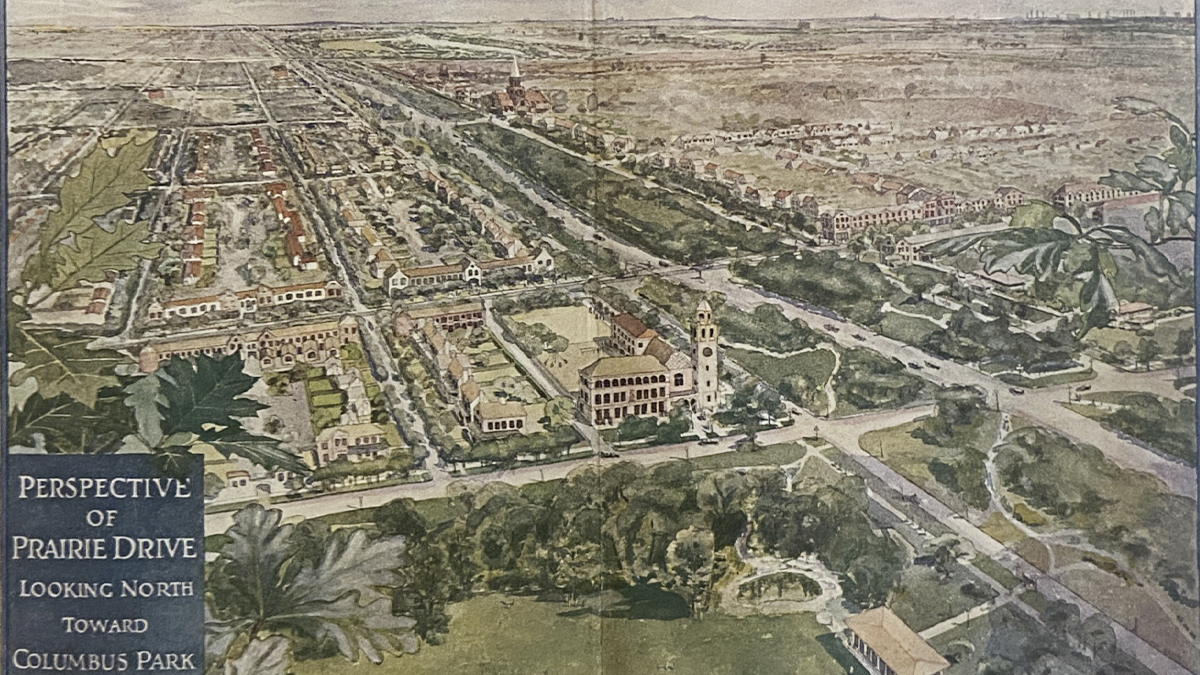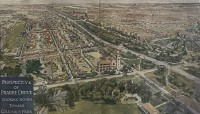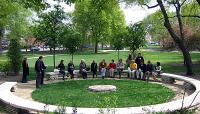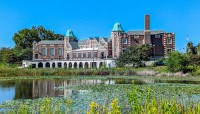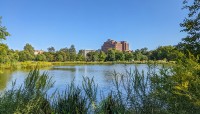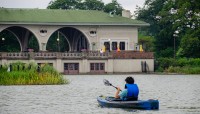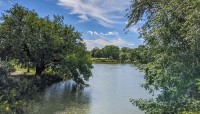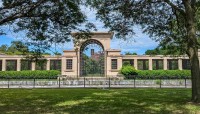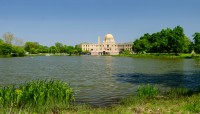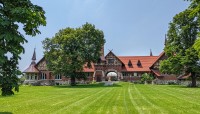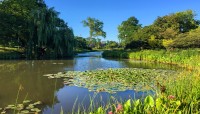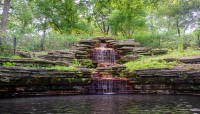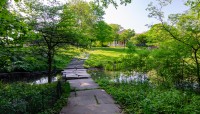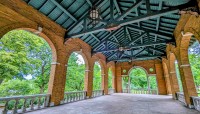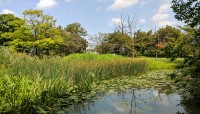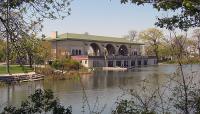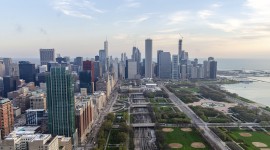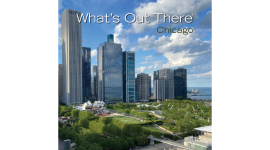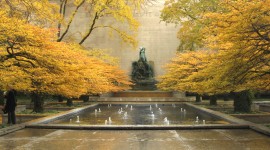Landscape Information
In 1869 the State of Illinois passed legislation to create a new system of parks and boulevards in Chicago. Three park commissions—Lincoln, South and West—were created to oversee this purpose. William Le Baron Jenney was hired as the first architect and chief engineer for the West Park System. In 1871 he produced preliminary plans for its three areas: North (now Humboldt) Park, Middle (now Garfield) Park, and South (now Douglass) Park, and a boulevard system to connect the West Park System with Lincoln Park and the South Park System. His park plans included dense plantings, generous lawn areas and facilities for passive and active recreation. Built on swampy land with few trees, each of these park designs called for the creation of picturesque vistas and the construction of lagoons to help with drainage. Jenney’s plans were only partially executed because the Great Chicago Fire of 1871 put on hold much of the parks’ development. Oscar F. Dubius added regional character to Jenney’s naturalistic park designs between 1878 and 1893. These regional elements were further developed when, in 1905, Jens Jensen became superintendent and landscape architect for all parks in the West system. Jensen redesigned the three original parks and designed and completed Columbus Park on land acquired in 1910—all in his characteristic Prairie Style. During his tenure he emphasized native materials and plants and utilized landscape elements to emulate naturalistic features, including “prairie rivers” and meadows.
Listed individually in the National Register of Historic Places, Humboldt Park (1992) and Garfield Park (1993) were also designated in multiple property listings in 1990 and 2018. The latter listing includes Douglass Park as a contributing resource. Columbus Park was listed in the National Register of Historic Places in 1991 and designated a National Historic Landmark in 2003.




